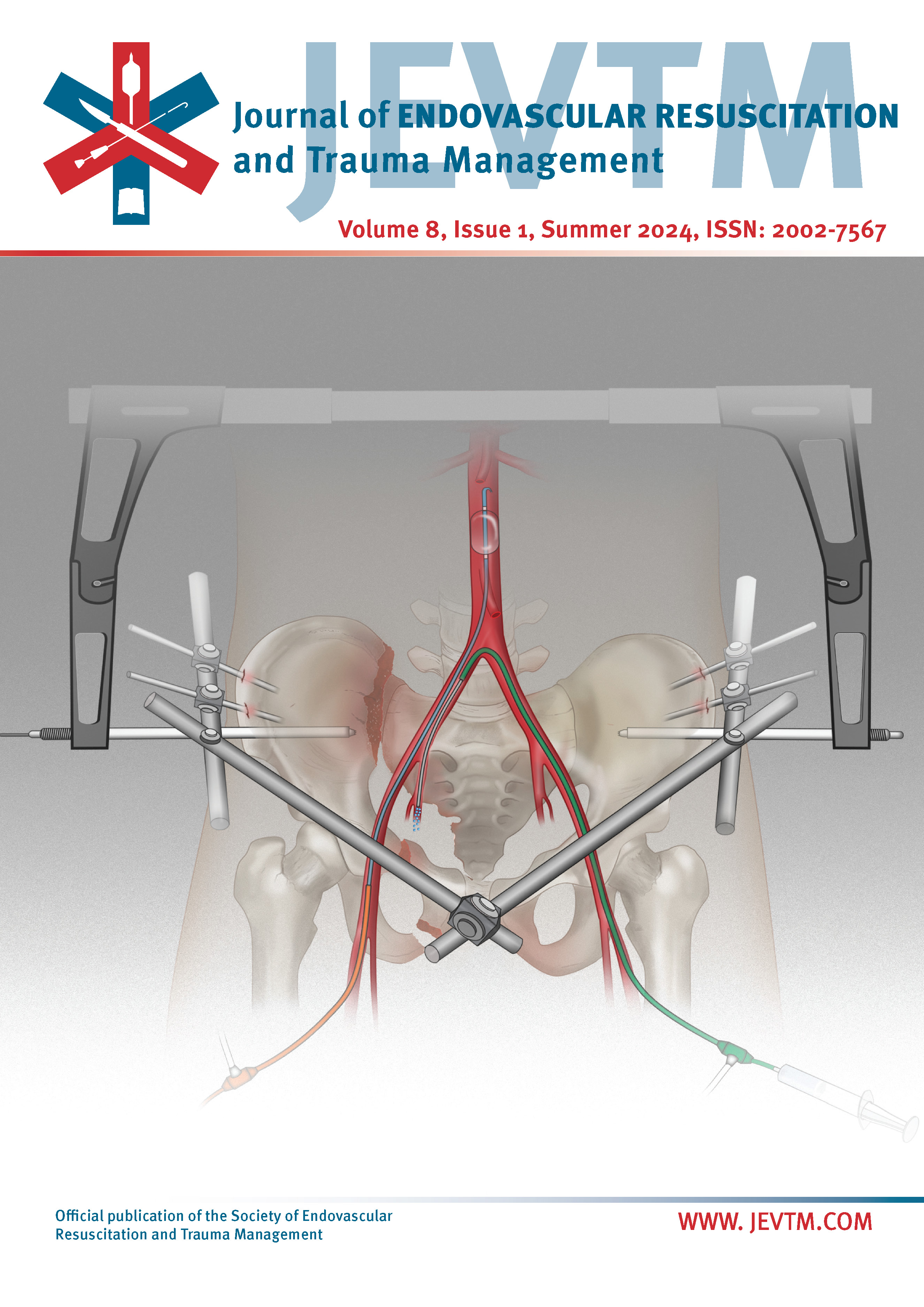Anatomy and Classification of Pelvic Trauma
DOI:
https://doi.org/10.26676/jevtm.22378Keywords:
Pelvic Fracture, Blunt Trauma, Hemodynamic Status, Bleeding, Vascular InjuriesAbstract
Pelvic fracture is one of the most complex injuries in trauma treatment. Bleeding continues to be one of the primary causes of death from pelvic fracture, and the severity of bleeding is not necessarily correlated with the fracture pattern. The priorities in managing pelvic fractures include controlling bleeding. Historically, classification systems only consider the anatomical fracture pattern, which does not correlate with the outcomes. The World Society of Emergency Surgery (WSES) classification considers both the pelvic fracture pattern and the hemodynamic condition of the patient. Vascular injuries caused by pelvic fractures are potentially lethal because they often manifest as non-compressible multifocal venous bleeding (80–85% of pelvic bleeding) and less frequently as arterial bleeding (15–20% of pelvic bleeding). The presence of vascular injury and open pelvic fractures are independent factors contributing to mortality. Another fundamental factor in the management of pelvic vascular trauma is time [1]. In this context, the assessment of potentially significant vascular injury and timely hemorrhage control should be the highest priorities in the acute management of these injuries. Classification of pelvic injuries that considers both the fracture pattern and the hemodynamic status of the patient, such as the WSES classification, appears to have greater utility in clinical practice compared to the diffused anatomical classification.
Downloads
Published
How to Cite
Issue
Section
License
Copyright (c) 2024 Jacopo Giuliani, Riccardo Guelfi, Camilla Cremonini, Dario Tartaglia, Giuseppe Zocco, Massimo Chiarugi, Federico Coccolini

This work is licensed under a Creative Commons Attribution 4.0 International License.
Authors of content published in the JEVTM retain the copyright to their works.
Articles in the JEVTM are published under the terms of a Creative Commons CC BY 4.0 license, which permits use, downloading, distribution, linking to and reproduction in any medium, provided the original work is properly cited.




